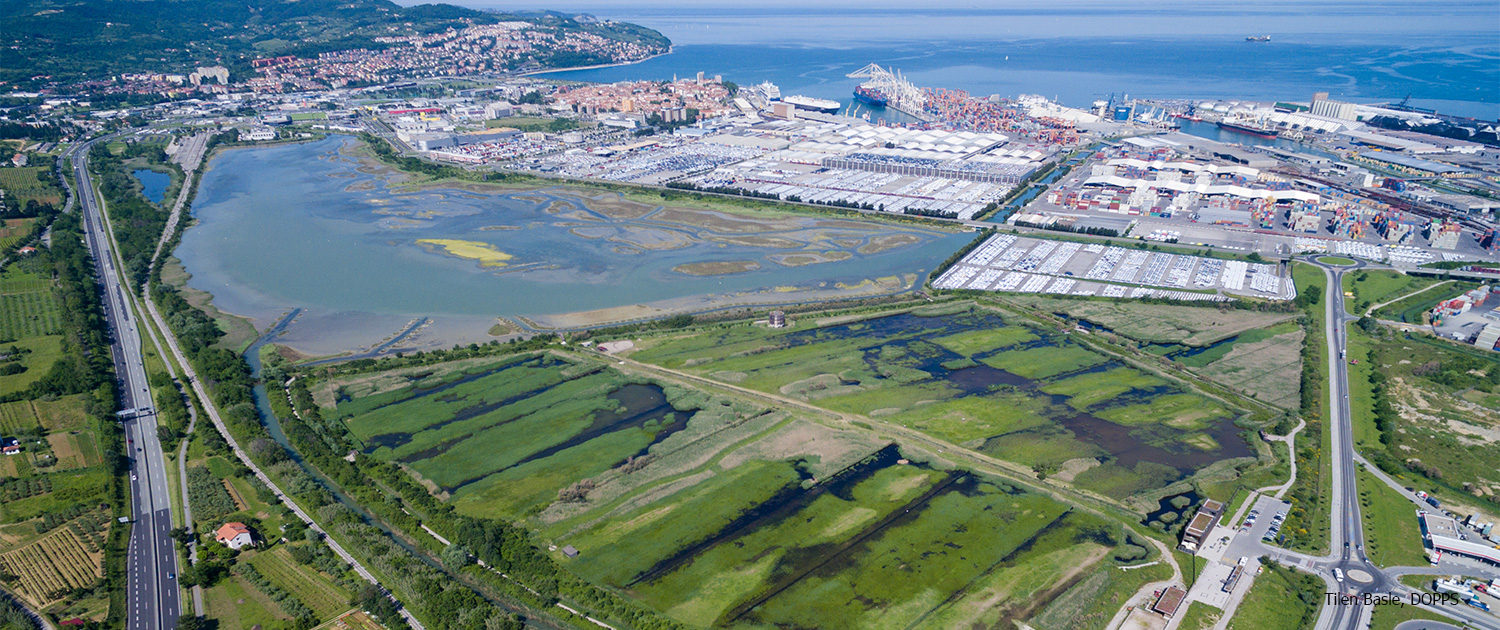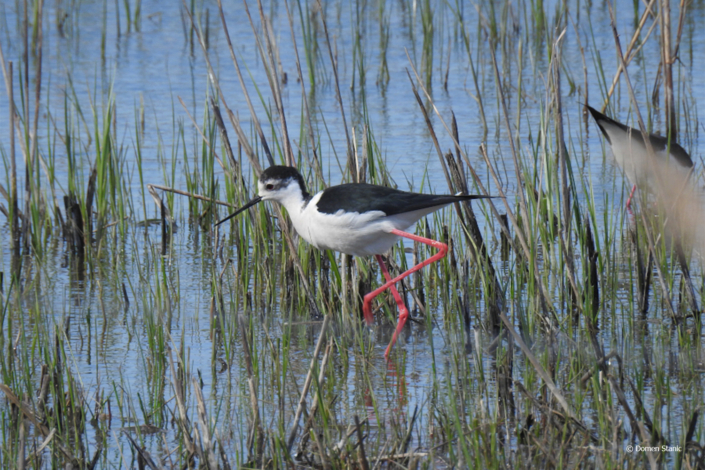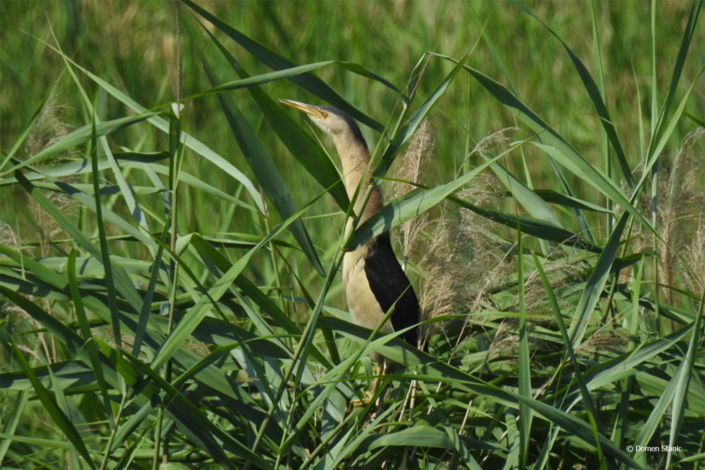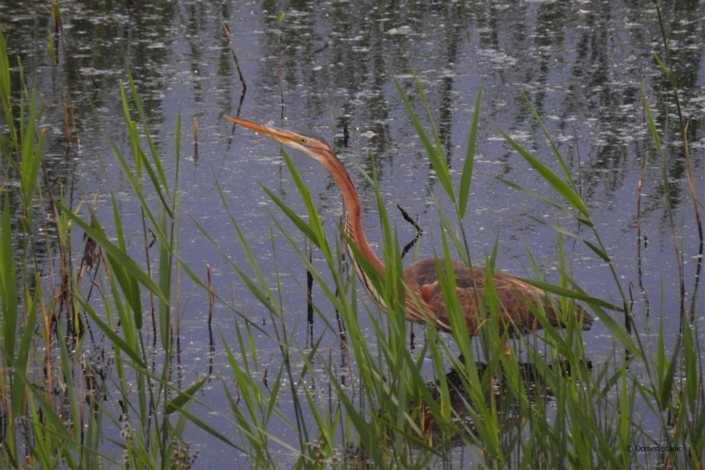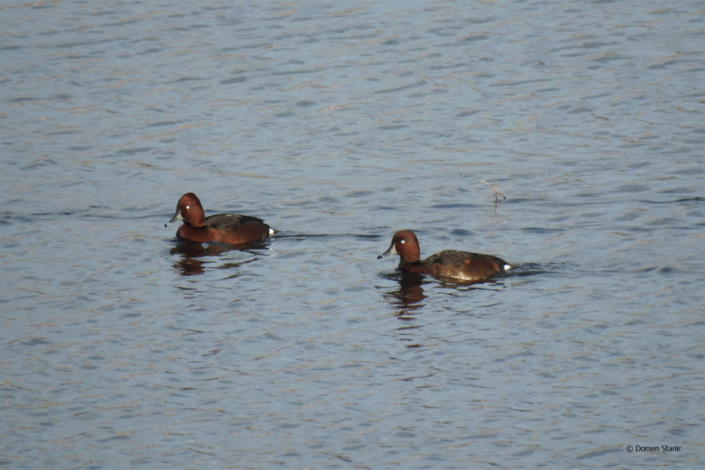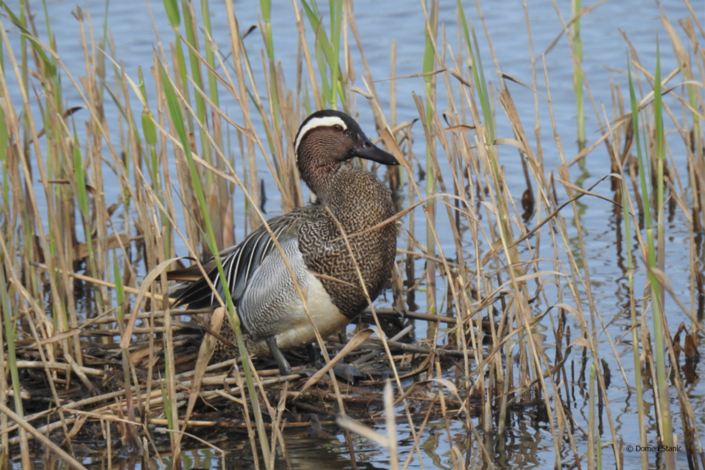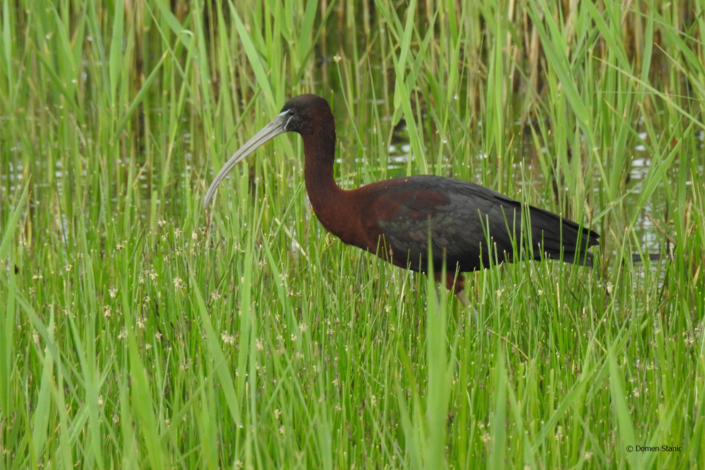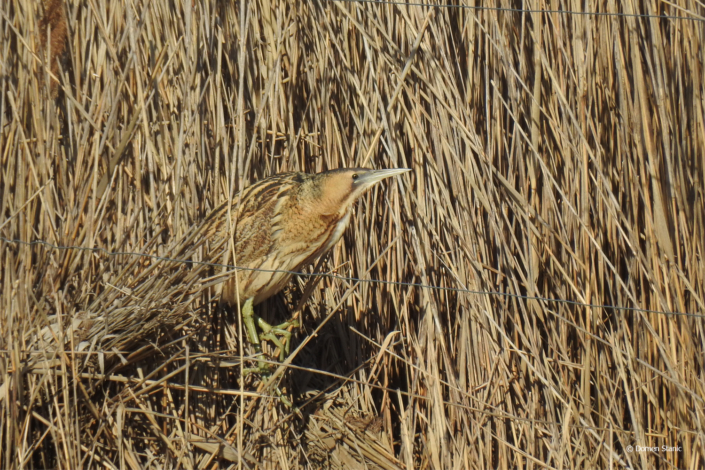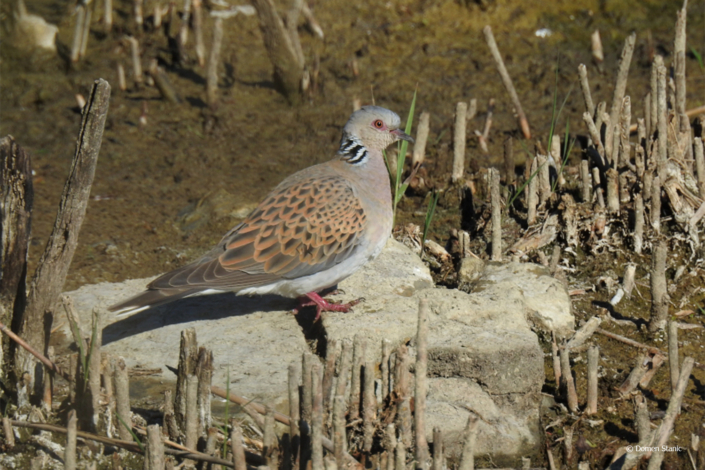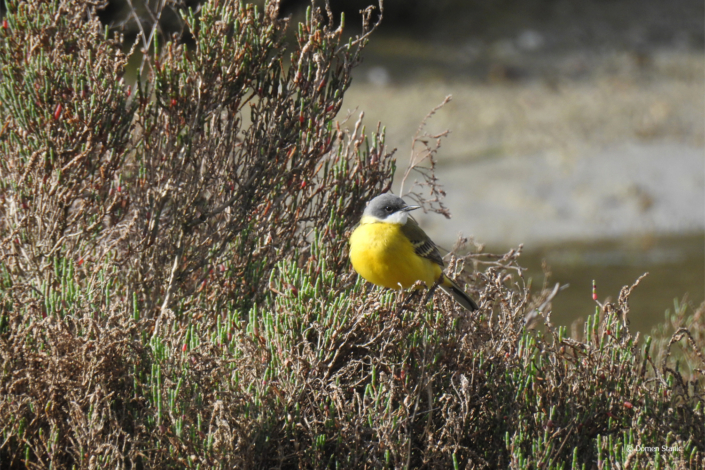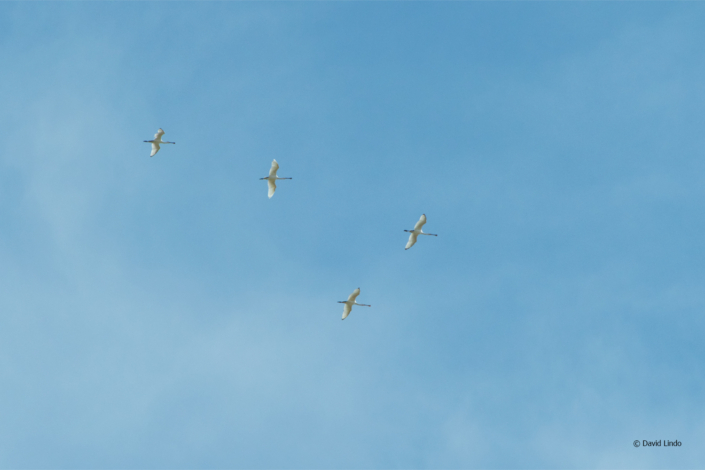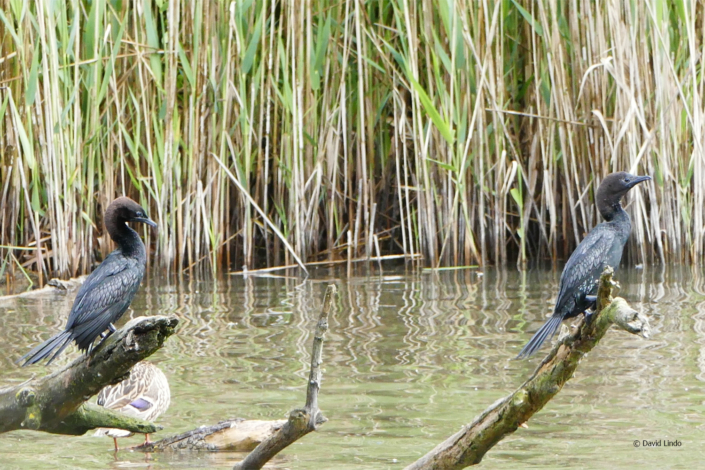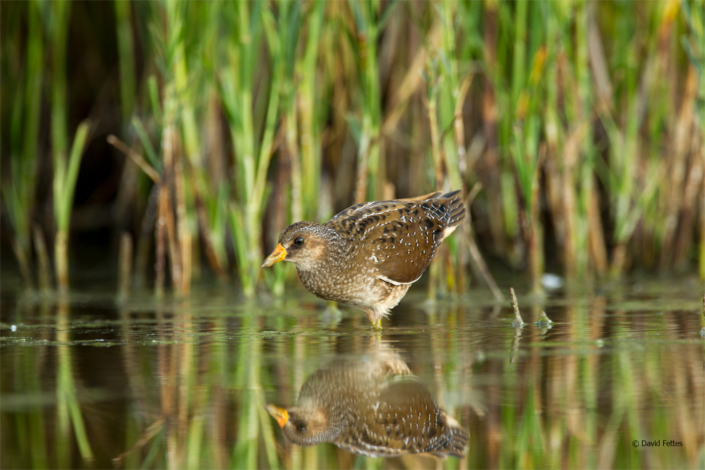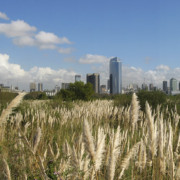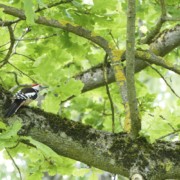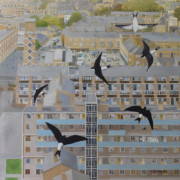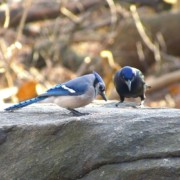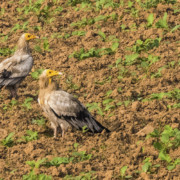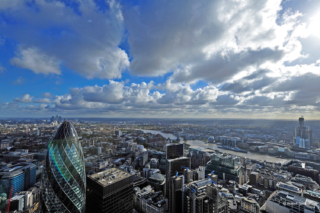My name is Domen and I work as a conservation ornithologist at the Slovenian BirdLife partner DOPPS. My work is mostly based at an urban nature reserve called Škocjanski Zatok, near the coastal town of Koper in southwestern Slovenia. I carry out bird monitoring there and manage the reserve’s scientific database. Although I only began working at this reserve quite recently, I’ve been involved in the voluntary bird censuses in the area since 2010. Therefore, I’ve got to know the birdlife at this site quite well.
Škocjanski Zatok Nature Reserve is an excellent example of the potential for coexistence between city and nature. Until the 1960s the area was a natural sea bay, but heavy urbanization and the expanding port of Koper encroached on the bay transforming it into a lagoon. Having suffered from heavy pollution and decades of degradation, Škocjanski Zatok was finally proclaimed a nature reserve in 1998. Nowadays, the 122 hectare reserve, managed by DOPPS, comprises of two main habitats: the original brackish lagoon and a re-naturalized freshwater wetland. However, it remains encircled by urbanization with the town and the port of Koper on its northern and western sides, a railway line and motorway along its southern border and an industrial area on the eastern edge.
In spite of all this, wildlife thrives here. The reserve’s bird check-list totals 258 species of which 48 are breeders. This urban heaven is nationally important for several rare breeding birds with the brackish lagoon being home to a mixed colony of Common and Little Terns (numbering about 130 pairs) as well as many pairs of Black-winged Stilt, Common Redshank, Little Ringed Plover, Yellow-legged Gull and Yellow Wagtail. This is also one of the only two sites in Slovenia where Kentish Plover and Avocet breed. Although the freshwater part is considerably smaller, it still hosts an amazing diversity of breeding birds. From my office window, on the reserve’s eastern edge, I can see Little Bitterns making short flights over the reeds on a daily basis in summer. Up to 10 pairs of this rather secretive heron breed here making the reserve one of the best sites for this species in Slovenia. The only breeding Purple Herons in the country are found right here and sometimes I can enjoy them directly from my office too. In spring and summer, the freshwater marsh echoes with the songs of Great Reed and Reed Warblers, as well as Cetti’s Warblers and Zitting Cisticolas. Other interesting breeders include Greylag Goose, Pochard, Water Rail, Great Crested Grebe, Melodious Warbler, Golden Oriole, Turtle Dove and Wryneck.
In winter the site hosts mixed flocks of wildfowl including Wigeon, Shoveler, Gadwall and Shelduck, while the occasional Ferruginous Duck also turns up. White-fronted Geese overwinter here in most years, while the reedbeds are filled with the sounds of Penduline Tits, Reed Buntings and sometimes Bearded Tits. One or two Bitterns also overwinter and I’m always excited when I can spot one lurking at the side of the reedbed in front of my office window. Migration times always bring greater diversity to the local bird life and the reserve represents an important stopover site for many migrants. Spring is characterised by good numbers of Garganey, Squacco Heron, Ruff, Wood Sandpiper and other waders, as well as the occasional Glossy Ibis and Spoonbill. In early autumn Bluethroat is particularly common around the reedbeds, when it shares the same habitat with Spotted and Little Crake. Other birds that can be observed almost all-year-round include Cattle Egret, Pygmy Cormorant and Kingfisher. The list of vagrants and rarities is also long and includes species such as Little Bustard, Red-breasted Goose, Green-winged Teal, Pectoral Sandpiper and Gannet.
Given the small size of the area and the heavy pressure from the surrounding urbanisation, I’m always amazed when I think about the great biodiversity of this nature reserve. Škocjanski Zatok is visited daily by hundreds of people, mostly locals enjoying a stroll in nature. Although many of them are not really aware they visit a nature reserve, it’s certainly clear that this place has become an essential part of their urban landscape.

